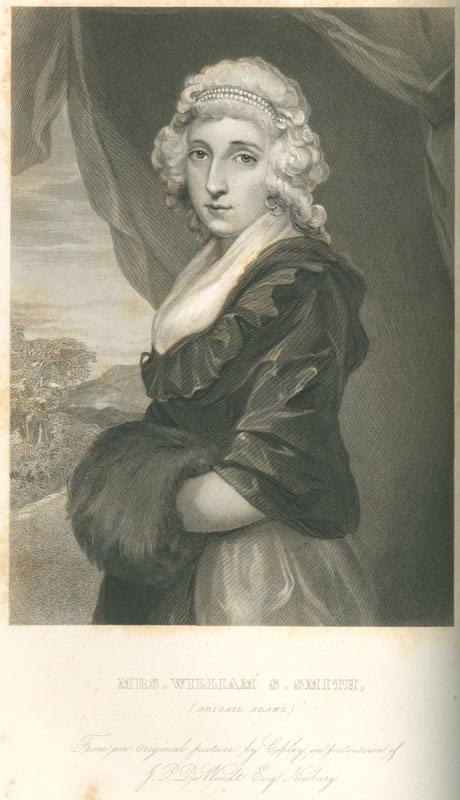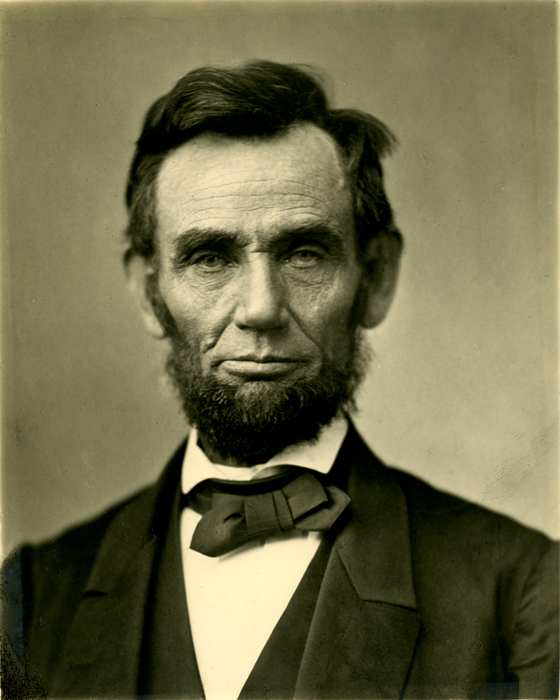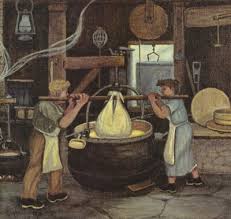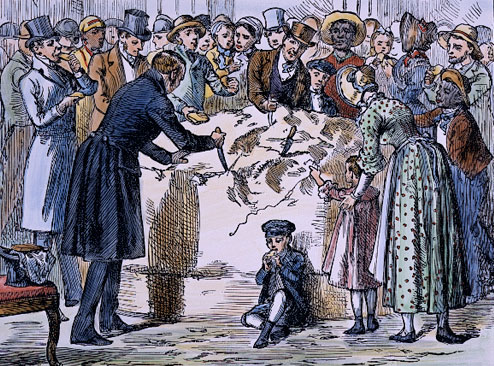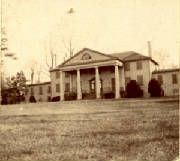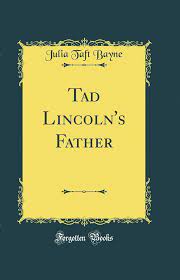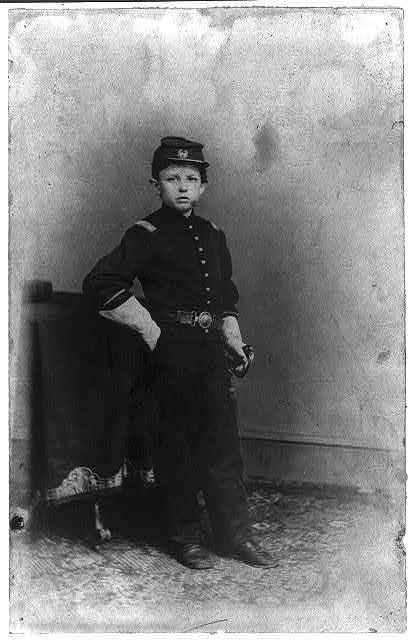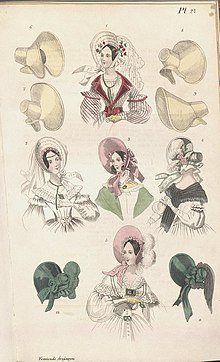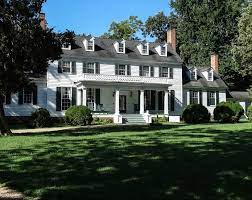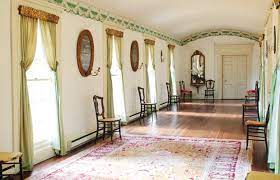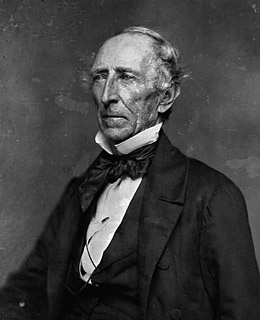The Enigmatic Miss Nabby
Abigail (Nabby) Adams (1765-1813), the only daughter of John and Abigail Adams was a hard one to figure. By her mid-teens (considered courtin’-age, if not actually marriageable), she was considered a fine looking young woman, well dressed and well mannered. Most people commented on her good sense, combined with a formidable reserve, which tended to keep people at a distance.
Even her mother, a formidable woman herself, recognized Nabby’s “apparent coldness and indifference”, and perhaps almost “wooden” traits. Tainting with faint praise, Abigail commented on Nabby’s prudence and lack of Sensibility. In AA’s time, “Sensibility” connoted more emotional softness of manners.
While some sources comment on Nabby’s closeness to her mother, others conclude that the young teenager was happy to escape Abigail’s overwhelming presence whenever she could. When Nabby visited Mercy Warren (on her own), it was noted that she not only enjoyed herself, but was reluctant to return to Braintree. Her visits to her Aunt Mary Cranch also afforded her time away. Some sources claim she missed her brothers John Quincy and Charles dreadfully when they went to Europe with their father; others note that she seldom wrote to them.
As the older sister to three younger brothers, Nabby, like her mother, was not unaware of the marvelous opportunities destined to fall in her brothers’ laps, and lack of them in her own. She may also have suspected her own lack of intellectual genius, or “curiosity.” She kept most of her thoughts to herself. Definitely enigmatic.
Mr. Royall Tyler
Royall Tyler (1757-1826), was Boston born and raised in a wealthy family, educated at Boston Latin School and Harvard University. When his parents died, young Tyler inherited a considerable estate, but gossip had it that he dissipated it substantially while “sowing his wild oats” at Harvard, which may (or not) have included fathering a child with a serving girl.
He served briefly in the militia during the early days of the Revolutionary War, studied law, passed the Massachusetts Bar, and, as a “reformed rake” with more maturity and purpose, moved to Braintree to open an office and pursue a legal career.
When Nabby first heard of the new fellow in town, she warned her cousins Betsy and Lucy Cranch against Tyler’s “artfulness,” since he boarded with the Cranches. Nabby also resolved to avoid him completely, since “our sex cannot be too careful of the characters of the acquaintance we form.”
Naturally Tyler became acquainted with Abigail Adams, ostensibly requesting to borrow some law books. He was invited to call. Attractive, well dressed and mannered, witty and very amiable, he met young Miss Adams, eight years his junior. Notwithstanding her reservations at sixteen, Nabby appears to have been smitten, although she was not easily wooed.
Mr. Tyler however, was definitely smitten, and proceeded to call at the Adams home regularly.
As soon as Mamma Abigail noticed a budding romance, she wrote her husband, (who responded to his daughter’s situation much faster than he did to his wife’s other letters), indicating his displeasure. Despite the pater-familias mindset of his generation, John Adams was sincerely an affectionate and caring parent. His disapproval of Nabby’s “courtship” was partly due to her youth, and partly due to whatever character defamation gossip Abigail included in the letter. He had little faith that a “reformed rake” could mend his ways.
John also disapproved of “courting the mother.” Mr. Tyler seems to have enjoyed his conversations with Mrs. Adams – perhaps even more than Nabby’s company. And there is no indication that Nabby was writing to her father, desperately wanting to marry…
Mary Cranch, Abigail’s sister (where Tyler was boarding) continued to add indignant aspersions to Tyler’s character, (although his conduct was above reproach in Braintree, and he continued to build his law practice). Interestingly, Abigail, who seldom altered her opinions or resolve, had grown not only to like Mr. Tyler, but had begun to regard him favorably as a potential “relation.”
Nevertheless, Abigail, Aunt Mary, Aunt Betsey, John’s aged mother, Abigail’s aged father, and even her uncle Cotton Tufts were all chiming in with opinions on the match!
Abigail was also in the process of planning to join her husband in Europe by this time, and expected to take Nabby with her. Her daughter offered no objection. Europe would be nice, and she would never marry without her father’s consent. John was conflicted about Tyler, but perhaps wavering.
Change of Heart, Change of Mind
By the time the Adams women sailed for Europe in 1784, an engagement between Nabby (now seventeen) and Tyler was at least tacit, if not actually formalized. The couple had exchanged miniature portraits.
Both John and Abigail believed that an ocean of separation would either strengthen the bond, or weaken it. Either way, it was a good thing. Again, Nabby said little, but her serious nature had always masked her “Sensibilities.”
John was coming around; Abigail was certain that Nabby and Tyler would marry in time. But the letters were few. More letters seem to have been exchanged between Tyler and Abigail, rather than with Nabby. Reports from relatives suggested that his conduct had lapsed.
Then unsettling rumors abounded that Tyler had returned to Boston, living in a boarding house run by a niece-by-marriage to Mary Cranch. Even more rumors abounded that he fathered another child, this time with his landlady. Hmmm.
Nabby eventually wrote to end their engagement, which did not seem devastating to either of them. Or to the senior Adamses.
She was now being courted by Col. William Stephens Smith, former ADC to General Washington and now private secretary to her father. John and Abigail approved, and were pleased to give their blessing. Nabby also seemed pleased, but again left the matter with her parents and fiancée.
An Ironic Epilogue
Not long before the Adams family returned from Europe, relatives strongly suggested that they required a better house than their little salt box cottage. After all, JA was A-listed for an important position in his fledgling country.
A fine house not far away had recently come on the market, and Abigail had visited there on occasion. She asked her Uncle (via power-of-attorney) to purchase it for them if he believed it was suitable. It was, and it became “Peacefield,” the Adams house for four generations, and “the country’s” to this day.
The house had previously been owned by Royall Tyler.
Sources:
Akers, Charles W. – Abigail Adams: A Revolutionary American Woman – The Library of American Biography – Pearson Longman, 2007
Gelles, Edith B. – Abigail and John: Portrait of a Marriage – William Morrow, 2009
Levin, Phyllis Lee – Abigail Adams – St. Martin’s Press, 1987





